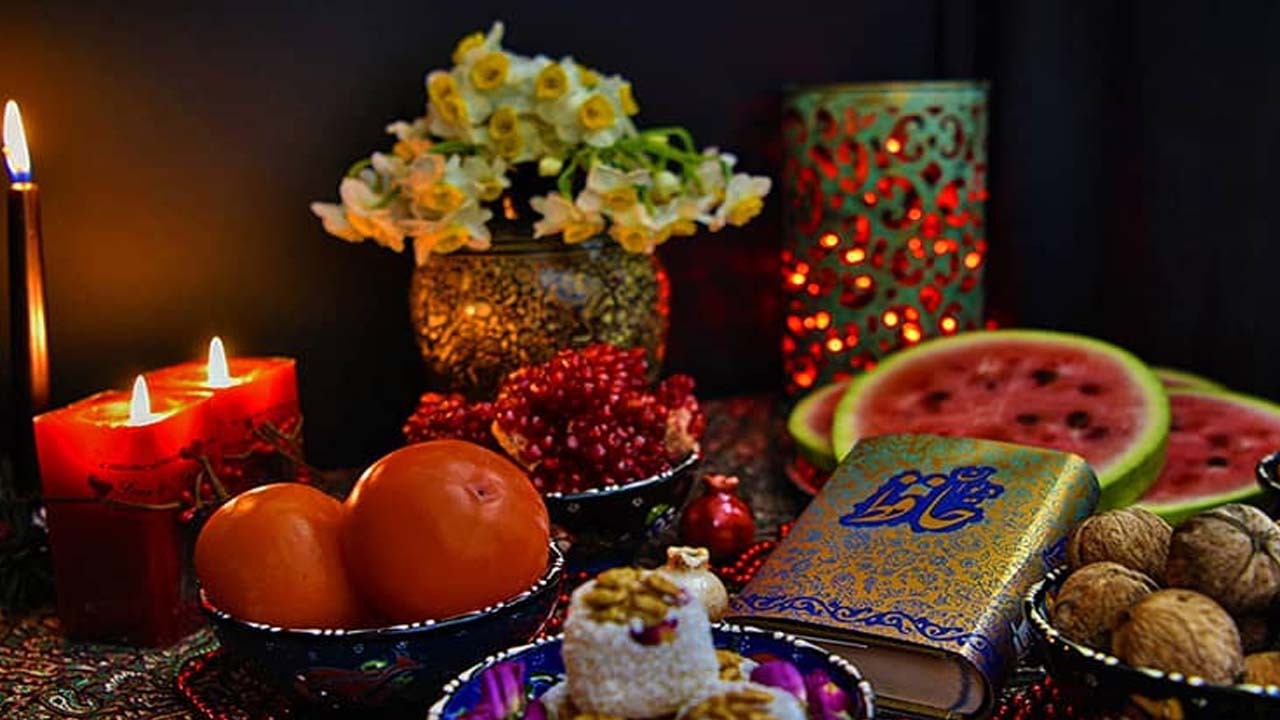Yalda Night; Celebrating the Longest Night of the Year
Yalda Night; Celebrating the Longest Night of the Year
Iran is one of the oldest countries in the world. Usually, being a country with centuries of history behind it means having lots of celebrations, ceremonies, and customs being held annually. The celebration of Yalda Night is one of them. Iranians have celebrated the longest night of the year for centuries, and on December 21 of each year, they have waited for the sun to come up again and celebrated the dawn of the first day of winter and welcomed the longer days, the presence of light and warmth for a minute more each day.

Yalda Night or Shabe Chelleh, which marks the last night of autumn, has been a part of the Iranian culture and celebrated in Iran since times immemorial.
The last night of autumn (of the Iranian calendar) and the first night of winter, which is the longest night in the whole year, and since then the nights begin to get short and the days become longer.
In the past, Iranians celebrated several different days as the beginning of the year, one of which was the first day of the month of Dey, coinciding with 22 January, which marked the end of one cosmic time cycle and the beginning of another time cycle and the beginning of winter. This night was known as the eve of the birthday of Izadmehr or Mitra, the rebirth of the Sun, and the symbol of Mehr. Yalda is the eve of the beginning of winter and corresponds to the night of the beginning of the great chelleh of winter. Traditionally the Iranian people spend this night together with family and friends until late midnight and at times until the next morning. Iranians of different regions decorate the special table for this night with a collection of summer and autumn fruits like pomegranates and watermelons and try to stay awake throughout the longest night of the year by eating fruits and nuts and telling stories and reading the poems of Iranian poets like Hafez and Ferdowsi. It is commonly believed that by staying awake on this night, until the rising of the winter sun, people would remove the demon of darkness from their lives.
Shab-e-Yalda (Yalda Night), also known as Shab-e Chelleh, is one of the most ancient Persian festivals annually celebrated on December 21 by Iranians all around the world. Yalda is a winter solstice celebration; it marks the end of autumn and the lengthiest night of the year. Since days get longer and nights shorter in winter, Iranians celebrate the last night of autumn as the renewal of the sun and the victory of light over darkness. On Shab-e-Yalda, people gather in groups of friends or families, usually at the home of grandparents or the elderly, to pass the longest night of the year happily by eating nuts and fruits, reading Hafiz poems, making good wishes, talking and laughing all together to give a warm welcome to winter, and a felicitous farewell to autumn. “Shab e Chelleh” is a night of get-togethers for pleasure and festivities for family and friends.
How is this night celebrated in Iran?
Eating is a delicious part of Yalda Night. Iranians eat nuts, watermelons, and pomegranates on this special night and share the last remaining fruits from summer together. Fruits of Shab-e-Yalda have symbolic significance as well. Some believe that watermelon symbolizes the sun by its spherical shape, while others believe that eating watermelon keeps one safe from being hurt by winter diseases. Pomegranate is also a symbol of birth, and its bright red seeds symbolize the glow of life.
Hafez Khaani
Shams Al-din Mohammad Hafez Shirazi is one of the most famous Iranian poets of the fourteenth century. He is highly valued and much loved by Iranians. Almost all Iranians keep a copy of Hafez’s book of poems called Divan in their homes.
Reading poems from Divan-e-Hafiz (Fal-e Hafiz) is an entertaining tradition of Yalda Night. Each family member or a group of friends makes a wish-while keeping it a secret- and randomly opens the book; then, the eldest member of the family or friends reads the randomly selected poem loudly. Since the poem is believed to be the interpretation of the wish and the way it would come true, it is fun to interpret the poetry and guess the wishes others make. In this way, the last and the longest autumn night ends happily, and the first great day of winter begins.
Shab-e-Yalda and its traditions are so amusing and interesting that they were officially added to Iran’s List of National Treasures in 2008. Yalda Night is also celebrated in countries, such as Afghanistan, Uzbekistan, Tajikistan, and Turkmenistan, and some of the Caucasian states such as Azerbaijan and Armenia since they share the same traditions as well.
Yalda Night’s Registration on UNESCO’s list of Intangible Cultural Heritage
According to the news by ECO Cultural Iran and Indian narrative, ‘Yalda/Chelleh’ has been added as the new inscription on UNESCO’s list of intangible cultural heritage by the suggestion of Iran and Afghanistan. Hopefully, this news adds another chapter to the age-old friendship between two ancient neighboring civilizations. The UNESCO fact sheet proudly characterizes this ancient event as a mirror of cultural identity, hospitality, peaceful coexistence friendship, and cultural diversity, highlighting its unique characteristics that have greatly and positively influenced the world’s culture.

Write your comment.